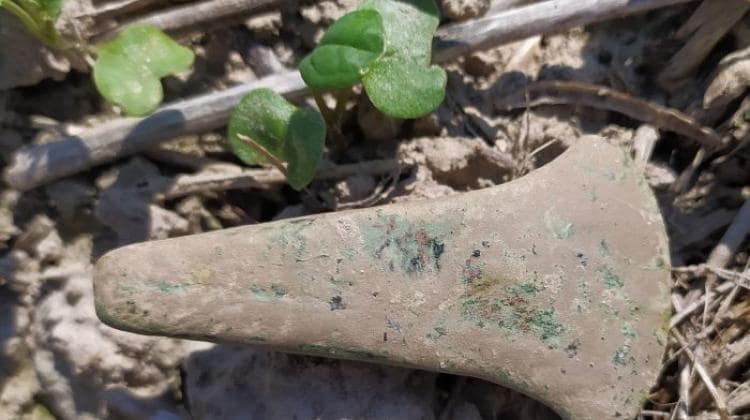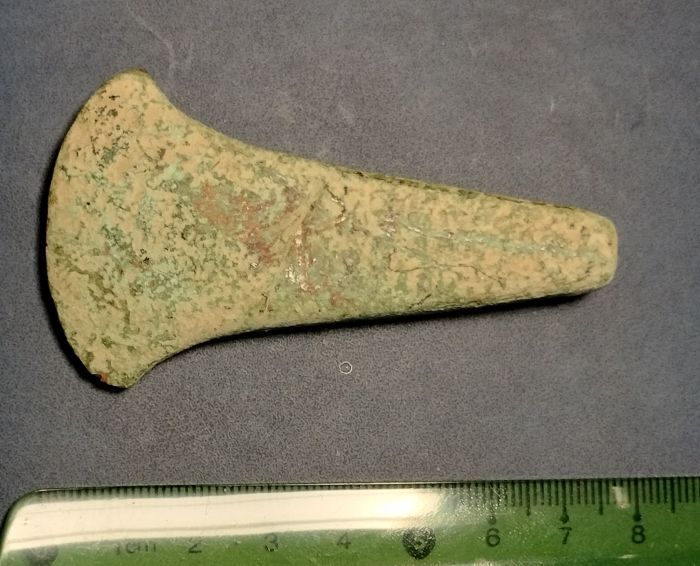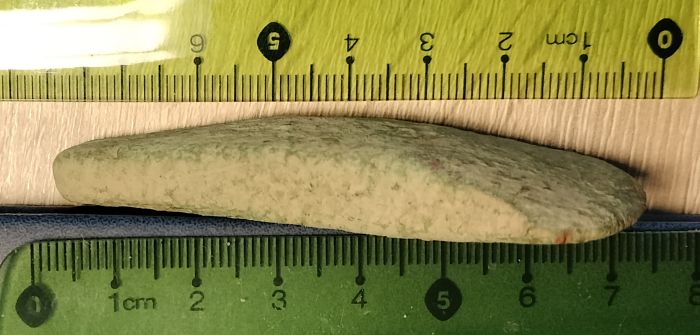
The oldest copper axe discovered in Poland
A copper axe identified with the Trypillia culture from the 4th to 3rd millennium BC has been discovered in Horodło municipality in Hrubieszów region.
An axe discovered in the Hrubieszów region and identified with the Trypillia culture is most likely the oldest find of copper products in Poland, informed the Lublin Provincial Conservator of Monuments.
The Lublin Provincial Conservator of Monuments described the precious relic as a broad fan-shaped blade measuring 7.4 cm long, 4.1 cm wide and a rectangular convex head measuring 0.9 cm x 0.6 cm.
The Cucuteni-Trypillia culture was one of the most important cultures in Southeast Europe. It emerged in the second half of the sixth millennium BC as a result of interactions between different Neolithic groups in the Carpatho-Balkan region.

The appearance of the axe in eastern Poland is surprising, since the regional scope of the Trypillian culture covered the areas of present-day Bulgaria, Romania, Moldova and western Ukraine.
Analyzing the find for its chronological and cultural relevance, archaeologist Wiesław Koman of the Zamość delegation of the Office of the Voivodeship for the Protection of Historical Monuments asked for help from Professor Elżbieta Kłosińska of the Institute of Archaeology at Maria Curie-Skłodowska University in Lublin. The expert denied that the presented axe belonged to Bronze Age cultures, because the artifact in no way corresponded to the known and already quite well-recognized axe typologies from that period.
“In addition, our axe was made by a rather simple ‘primitive’ casting method, in a flat convex form, which was no longer used in the advanced metallurgy of the Bronze Age. It was therefore necessary to pay attention to the earlier Neolithic period. Unfortunately, there is no such equivalent in the inventories of Neolithic cultures from Poland,” he said.

The puzzle was solved by turning to archaeological finds from inside Ukraine. “Wiesław Koman came across the publication of an identical find of a copper axe discovered in the village of Shcherbanivka in the Kiev region, and the accompanying fragments of vascular pottery made it possible to attribute it to the Trypillia culture and date it to the late development period of this culture, estimated in the 4th to 3rd millennium BC. ” – reported the conservator.
The Lublin conservator says the following: “It is true that we have recorded finds of Trypillian culture pottery from Gródek, Hrubieszów commune, and the presence of this axe in nearby Matcz can be taken as confirmation that people with this culture also settled in eastern Poland.”
According to the conservator, the axe will soon be transferred to the collection of the Hrubieszów Museum, where further research will be carried out.
Cover Photo: Lublin Provincial Conservator of Monuments
Source: PAP
You may also like
- A 1700-year-old statue of Pan unearthed during the excavations at Polyeuktos in İstanbul
- The granary was found in the ancient city of Sebaste, founded by the first Roman emperor Augustus
- Donalar Kale Kapı Rock Tomb or Donalar Rock Tomb
- Theater emerges as works continue in ancient city of Perinthos
- Urartian King Argishti’s bronze shield revealed the name of an unknown country
- The religious center of Lycia, the ancient city of Letoon
- Who were the Luwians?
- A new study brings a fresh perspective on the Anatolian origin of the Indo-European languages
- Perhaps the oldest thermal treatment center in the world, which has been in continuous use for 2000 years -Basilica Therma Roman Bath or King’s Daughter-
- The largest synagogue of the ancient world, located in the ancient city of Sardis, is being restored











Leave a Reply